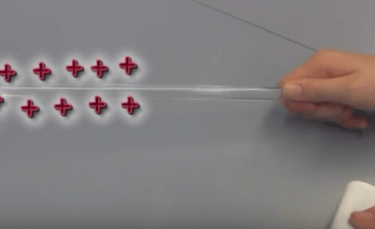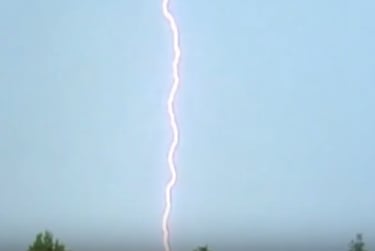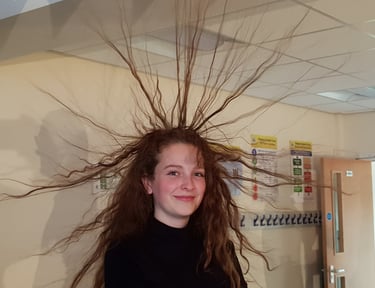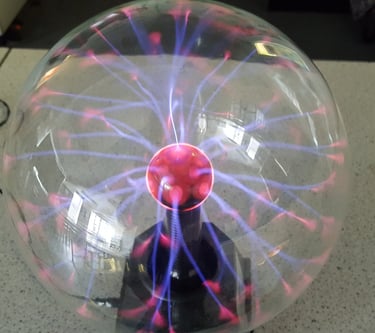STATIC ELECTRICITY


We have all encountered static electricity in real life, whether it's by rubbing a balloon on your head and sticking it on a wall, getting a shock when we touch something metal to being struck by lightning! No? Just me? Well, it's out there and waiting to zap you or just give you a bad hair day like poor old Barbara in our picture.
But why do objects gain a static charge? Why do somethings gain a positive charge while others gain a negative charge? Where is static electricity dangerous and how on earth can it ever by useful? Join us as we investigate this electrifyingly exciting topic and answer all these questions and more!
INVESTIGATING STATIC ELECTRICITY
Use this interactive simulation from our friends at Phet showing how objects get charged up and what happens when you put different charges objects and the same type of charged objects together: Remember and pay attention: ONLY THE NEGATIVE CHARGES CAN MOVE.
Activities and questions to consider:
Rub the balloon on the jumper and explain why it gets a negative charge
What type of charge does the jumper have after this?
The balloon is attached to the jumper if you let go. Why?
The balloon is also attracted to the wall. This would work what ever the charge on the balloon. Why? What is going on?
Use two balloons and give them the same of charge. What happens if you bring one of the balloons near another?
STATIC GEEKS
Static electricity as explained by the original lab animal mutant science geeks. Packed with cutting edge CGI, this ancient video explains how things become statically charged and how fanous van der graaf generator can be used to model how lightning occurs. It also conains life saving physics advice as the unfortunate lab geeks are sacrificed in the name of scientific research as we answer the question:"Where is the safest place to hide during an electrical storm?" Carnage and education packed into one video.

STATIC FACTS!
1. What is Static Electricity?
Static electricity is the build-up of electrical charge on the surface of an object, usually caused by friction.
When two different materials are rubbed together, electrons are transferred from one to the other, leaving one object positively charged and the other negatively charged.
ONLY the ELECTRONS CAN MOVE!
2. How it Works:
Electrons: Negatively charged particles that can move from one object to another.
Protons: Positively charged particles that remain fixed in the nucleus of an atom.
Neutral Objects: Objects that have an equal number of protons and electrons.
Charged objects: Unequal numbers of protons and electrons
3. Effects of Static Electricity:
Attraction and Repulsion: Oppositely charged objects attract each other, while like-charged objects repel each other.
Sparks and Shocks: When the charge builds up to a high level, it can jump across a gap to another object, causing a spark or shock.
Dangers of Static Electricity
Fires and Explosions: Static sparks can ignite flammable gases or dust, leading to fires or explosions.
Electric Shocks: Can cause discomfort or even injury, especially in sensitive environments like hospitals.
Uses of Static Electricity
Photocopiers and Printers: Use static electricity to attract toner particles to paper.
Air Purifiers: Use static charges to remove dust and pollutants from the air.
Paint Spraying: Static electricity helps paint to stick evenly to surfaces.






ELECTRIC FIELDS
All charged objects will have an electric field around them. The further away you get from the field the weaker it gets.
Electric fields are regions where charged particles experience a force.
Electric field lines represent the direction and strength of the field - The closer together they are, the stronger the field!.
Positive charges have outward radiating field lines, while negative charges have inward converging field lines.
You can investigate electric fields by using this amazing interactive thingy below from those wonderful people at PHeT!
What shapes of electric fields do you get when you bring opposite charges closer to each other?
What shape of field do you get when things with the same charge are brought near each other?
Studying for exams? Practice drawing the fields for positive and negative charges! It comes up in exams often!




ELECTRIC FIELD HOCKEY?
Play hockey with electric field? Don't be ridiculous! Then again..............sounds fun! Why not give it a go? Editor's note: We've played. Don't feel bad. We had no idea what we were doing either!




